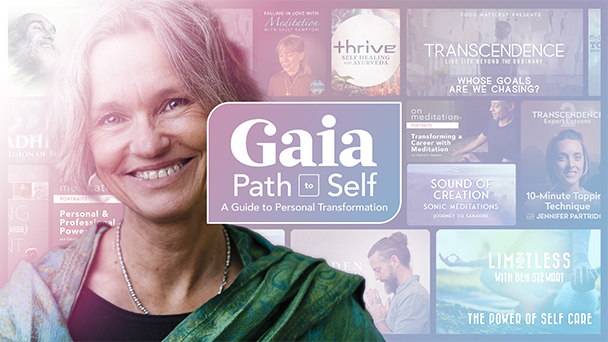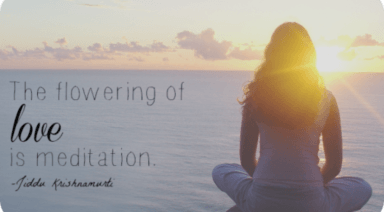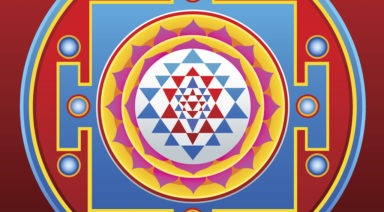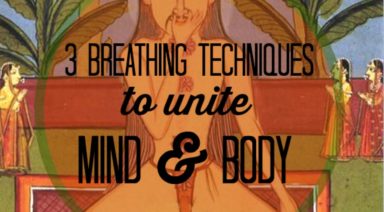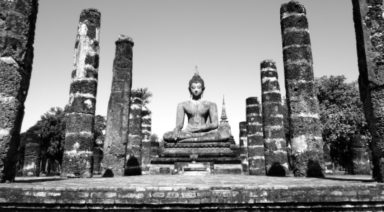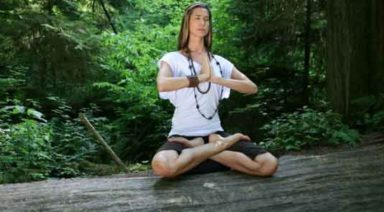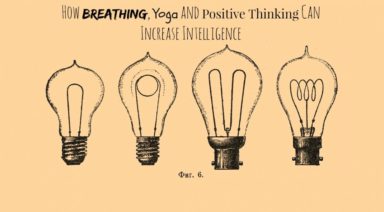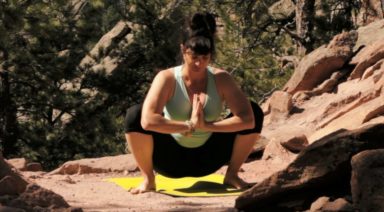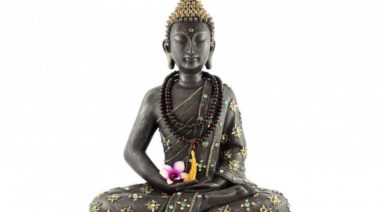Which Type of Meditation Style is Best For You?

While some may think that meditation requires nothing more than sitting silently, it isn’t necessarily as easy as it seems. The commitment needed to practice every day coupled with the challenge to empty your mind of everyday stressors can be discouraging. However, it doesn’t necessarily need to be.
Meditation has been scientifically proven to reduce stress and anxiety, improve health, and increase happiness. However, the most essential aspect of meditation is appealing to your spirit. It is an entirely subjective practice and there is no right or wrong way to meditate. By practicing every day and finding a style that compliments your soul – you’ll not only experience the joy in meditation, but you might just find you’re better at it then you thought!
The following is a list of the most common types of meditation. Discover which one speaks to you!
Types of Meditation
The following are the most common types of meditation styles. Before you begin, ask yourself a few questions:
- Do you find increased focus through movement?
- Does darkness help you to relax?
- Do you find sounds calming or distracting?
- Are you trying to focus your mind or empty it?
Answering these simple questions can help you to narrow down which type of meditation is most suited for you. If by the end of this article you still can’t decide – Why not try them all?
Focused Meditation
Who should try it: Excellent for true beginners or anyone who needs a little extra help focusing.
Focused meditation is a general label for any kind of meditation that concentrates on any of the five senses. While visualizations are the most popular, other aspects may include focusing on sounds or touch. In focused meditation, you’ll also commonly be asked to concentrate on the flow of your breath – as it moves in and out of your body and pulses energy throughout your body.
Spiritual Meditation
Who should try it: People who thrive in silence and are looking for spiritual growth.
Spiritual meditation, while similar to prayer, includes various elements to help practitioners reach a more reflective and contemplative state. In spiritual meditation, you embrace the silence around you – whether at home or a place of worship – and slowly begin to let your mind wander to an internal prayer or question. Some people find that the answer to their deepest question comes from outside themselves through the Divine, God, or Universe. Others find that simply allowing themselves to be comfortable within the silence brings the answer from within.
Mantra Meditation
Who should try it: People who dislike silence and find peace in repetition.
Despite popular belief, silence isn’t the only way to meditate. Mantra meditation uses a repetitive sound or set of sounds to clear the mind, as seen in the body mantra method. By reciting or chanting a mantra, your mind is able to focus on the rhythmic song and release the stressors of the day. With a long tradition in meditation, mantras can be sung loudly or whispered quietly. You can use an inspirational phrase or even a simple onomatopoeia like “Om” or “Aum.” Meditation is subjective and there’s no one right technique – it all depends on what the experience means to you personally.
Transcendental Meditation
Who should try it: People looking for a more structured meditation practice or those new to meditation but serious about maintaining the practice.
Founded by Maharishi Mahesh Yogi, Transcendental meditation is the most studied type by scientists. Made popular by celebrity followers like the Beatles, transcendental meditation is by far the most popular type with nearly 5 million practitioners worldwide. It uses a mantra or series of Sanskrit words to help the practitioner focus during meditation in lieu of just following breath. While some believe transcendental meditation and mantra meditation to be the same – transcendental meditation is slightly more organized and structured, with each student receiving a specific mantra based on a number of different factors such as birth year and sometimes gender. The official website for transcendental meditation states this form of meditation is “… a simple, natural, effortless procedure practiced 20 minutes twice each day while sitting comfortably with the eyes closed. It’s not a religion, philosophy, or lifestyle.”
Movement Meditation
Who should try it: Anyone who finds sitting still to be a distraction, finds peace through action, or is tired of sitting at a desk all day.
A fairly broad category, movement meditation is the active branch of meditation and incorporates some form of motion. Rather than getting your heart rate going, movement meditation utilizes walks through the woods, yoga, gardening, or even basic housecleaning to clear the mind. By allowing the gentle movements to guide you, your mind is free to wander and explore within itself.
Mindfulness Meditation
Who should try it: Anyone without access to a regular teacher.
Mindfulness meditation is an ongoing life practice and is the umbrella category for all techniques used to accept all that arises without judgement. Less of a separate activity and more a type of lifestyle, mindfulness meditation originates from Buddhist teachings and teaches the practitioner to address and release stress in the moment it is happening. It promotes a focused attention and observation of the world immediately around you and nurtures a tone of surrender to that which you cannot change. This daily meditation practice is generally best for those who don’t have access to a regular teacher as it can be practiced alone and further information and community support groups are easily found across the internet.
Begin Hacking Your Way to a Solid Daily Meditation Practice

One day a sage and his students were meditating together. At one point the student noticed the teacher floating in the air.
Frustrated, he said to his teacher, “Master, I don’t understand why I’m not floating too. What is the difference between you and me that you can do this and I cannot?”
From his position aloft, the master looked down at the student and said, “Practice.”
How many articles, blogs, or social media posts have you read lately that start like the next sentences?
“A 2014 Harvard research study determined that meditation builds the brain’s gray matter in eight weeks. Grey matter, composed of neurons, makes up about 40 percent of the brain. More is good.”
Then they continue by citing more research.
“Meditation reduces anxiety, according to another study. Meditation reduces age and race bias — meaning that meditation could be an antidote to racism and prejudice — says a 2015 Central Michigan University study. According to the American Psychological Association, “mindfulness-based cognitive therapy [meditation] may prevent and treat depression.”
More research: Vast swaths of first-world societies struggle with self-acceptance, experiencing “body dissatisfaction.” Results of a 2014 study report that meditation increases “self-compassion,” meaning reduced “body shame,” and increased sense of self-worth.
And one more: The Mayo Clinic reported that a growing body of research suggests meditation may help manage symptoms of asthma, cancer, heart disease, high blood pressure, and irritable bowel syndrome, and offers methods such as guided, mantra, and mindfulness meditation as well as qigong and tai chi.
At this point, not making the effort to establish a meditation practice might be likened to not flossing your teeth. And the benefits, including emotional hygiene, addiction resistance, enhanced immune system function, etc., are so far-reaching, one might think humans require meditation for optimal function. Just the fact that meditation is proven to increase happiness should be enough to send us running, en masse, to our cushions. So why aren’t we all meditating like a nation of monks?
Good question. Consider this.
We like to imagine we’re “free” to do what we like.
Think again.
As adults, we’re free of parental regulation — yay — but if, when encountering friction, we give up on creating new habits, we’re slaves to our own resistance. This means we’re not free to easily embrace and integrate habits that dramatically increase our well-being and quality of life.
For many, failing to meet goals on the first few attempts means lost resolve. Initially, when we’re practicing our new thing, be it a musical instrument, a language, or maybe fencing, we feel solid and inspired. Sooner or later we miss a day because (pick your favorite): We didn’t practice but we’re tired and it’s time for bed. Or there’s a crisis. Or a distraction. Or we’re traveling. Or it gets harder and not as fun. Or boring. Or we weren’t in the mood, or we had a sick child, or we forgot (the most insidious). The rationales are infinite. A couple of “misses” can mean a loss of momentum.
Then we beat ourselves up a little (or a lot) and slide back into old routines, waiting for the next upswell of inspiration, the next urge for change, the next training or class, or in the case of meditation, the next weekend retreat. “Maybe a new method will do the trick,” we think.
If this doesn’t sound familiar, and you are someone who seamlessly integrates new disciplines into your life without missing a beat, skip the next section. Flawed mortals, read on.

